Healthcare Provider Update: General Mills primarily collaborates with UnitedHealthcare for its employees' healthcare coverage. As we look ahead to 2026, significant healthcare cost increases are anticipated. Factors contributing to this rise include the expiration of enhanced federal ACA premium subsidies and increasing medical costs within the marketplace. Reports indicate that some states might see premium hikes of over 60%, with experts warning that without legislative intervention, many consumers could face steep increases in out-of-pocket healthcare expenses, potentially rising as much as 75%. This scenario presents a notable challenge for both employees and employers as they navigate the shifting landscape of healthcare costs. Click here to learn more

With 2021 wrapped up and going into the new year, the IRS just released Revenue Procedure 2021-45 and Notice 2021-61 which detail the tax changes and cost of living adjustments for 2022. The main points of this new release that will most likely affect General Mills employees would be:
- This year, the tax filing deadline is on April 18, instead of the typical April 15.
- The standard deduction for married couples filing jointly for tax year 2022 rises to $25,900 up $800 from the prior year.
- For single taxpayers and married individuals filing separately, the standard deduction rises to $12,950 for 2022, up $400, and for heads of households, the standard deduction will be $19,400 for tax year 2022, up $600.
Also, the personal exemption for tax year 2022 remains at 0, as it was for 2021. This elimination of the personal exemption was a provision in the Tax Cuts and Jobs Act.
If you experienced a job change, retirement or lapse in employment from General Mills, the “lookback” rule may be an important option to consider when filing taxes this year. You’ll also have the option to use your 2019 earned income for your 2021 return thanks to changes from the American Rescue Plan Act. This rule is mainly used for calculation of the Earned Income Tax Credit and the Child Tax Credit.
Remote workers employed by General Mills might face double taxation on state taxes. Due to the pandemic, many employees moved back home which could have been outside of the state where they were employed. Last year, some states had temporary relief provisions to avoid double taxation of income, but many of those provisions have expired. There are only six states that currently have a ‘special convenience of employer’ rule: Connecticut, Delaware, Nebraska, New Jersey, New York, and Pennsylvania. If you work remotely for General Mills, and if you don't currently reside in those states, consult with your tax advisor if there are other ways to mitigate the double taxation.
Retirement account contributions: Contributing to your General Mills 401k plan can cut your tax bill significantly, and the amount you can save has increased for 2022. In 2022, the IRS has raised the contribution limit for a 401k to $20,500 - up by $1,000. Meanwhile, General Mills workers who are older than 50 years old are eligible for an extra catch-up contribution of $6,500.
There are important changes for the Earned Income Tax Credit (EITC) that you, as a taxpayer employed by General Mills, should know:
- The income threshold has been increased for single filers with no children; the American Rescue Plan Act temporarily boosted it from $543 to $1,502 in 2021; this expansion has not been carried over to the 2022 tax year.
- Married taxpayers filing separately can qualify: You can claim the EITC as a married filing separately if you meet other qualifications. This wasn't available in previous years.
Increased deduction for cash charitable contributions: In years past, the threshold was $300 for both single and joint filers, but in 2022 that changed to $300 for single filers and up to $600 for joint filers.
Child Tax Credit changes:
- A $2,000 credit per dependent under age seventeen..
- Income thresholds of $400,000 for married couples and $200,000 for all other filers (single taxpayers and heads of households).
- A 70 percent, partial refundability affecting individuals whose tax bill falls below the credit amount.
2022 Tax Brackets
-png.png?width=575&name=image%20(18)-png.png)
Inflation reduces purchasing power over time as the same basket of goods will cost more as prices rise. In order to maintain the same standard of living throughout your retirement after leaving General Mills, you will have to factor rising costs into your plan. While the Federal reserve strives to achieve 2% inflation rate each year, in 2021 that rate shot up to 7% a drastic increase from 2020’s 1.4%. While prices as a whole have risen dramatically, there are specific areas to pay attention to if you are nearing or in retirement from General Mills, like healthcare. Many General Mills corporate retirees depend on Medicare as their main health care provider and in 2022 that healthcare out-of-pocket premium is set to increase by 14.5%. In addition to Medicare increases, the cost of over-the-counter medications is also projected to increase by at least 10%. The Employee Benefit Research Institute (ERBI) found in their 2022 report that couples with average drug expenses would need $296,000 in savings just to cover those expenses in retirement. It is crucial to take all of these factors into consideration when constructing your holistic plan for retirement from General Mills.
*Source: IRS.gov, Yahoo, Bankrate
Featured Video
Articles you may find interesting:
- Corporate Employees: 8 Factors When Choosing a Mutual Fund
- Use of Escrow Accounts: Divorce
- Medicare Open Enrollment for Corporate Employees: Cost Changes in 2024!
- Stages of Retirement for Corporate Employees
- 7 Things to Consider Before Leaving Your Company
- How Are Workers Impacted by Inflation & Rising Interest Rates?
- Lump-Sum vs Annuity and Rising Interest Rates
- Internal Revenue Code Section 409A (Governing Nonqualified Deferred Compensation Plans)
- Corporate Employees: Do NOT Believe These 6 Retirement Myths!
- 401K, Social Security, Pension – How to Maximize Your Options
- Have You Looked at Your 401(k) Plan Recently?
- 11 Questions You Should Ask Yourself When Planning for Retirement
- Worst Month of Layoffs In Over a Year!
- Corporate Employees: 8 Factors When Choosing a Mutual Fund
- Use of Escrow Accounts: Divorce
- Medicare Open Enrollment for Corporate Employees: Cost Changes in 2024!
- Stages of Retirement for Corporate Employees
- 7 Things to Consider Before Leaving Your Company
- How Are Workers Impacted by Inflation & Rising Interest Rates?
- Lump-Sum vs Annuity and Rising Interest Rates
- Internal Revenue Code Section 409A (Governing Nonqualified Deferred Compensation Plans)
- Corporate Employees: Do NOT Believe These 6 Retirement Myths!
- 401K, Social Security, Pension – How to Maximize Your Options
- Have You Looked at Your 401(k) Plan Recently?
- 11 Questions You Should Ask Yourself When Planning for Retirement
- Worst Month of Layoffs In Over a Year!
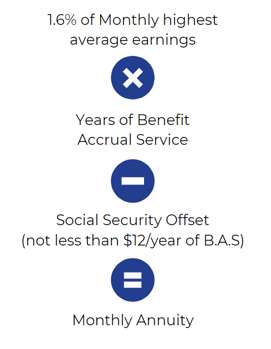
Highest Average Earnings is the monthly average of your regular earnings for the 36 consecutive months in which they’re the highest.
In most cases, this will be the sum of your last 36 months divided by 36.
The applicable interest rate is a separate average of each of the three segment rates for the fifth, fourth and third months preceding your annuity start date. The three segment rates are calculated by the IRS according to regulations that are also part of the Pension Protection Act of 2006 and reflect the yields of short-, mid-, and long-term corporate bonds. (Note: Chevron also has Legacy Unocal and Legacy Texaco Retirement Plans)
Different Plans
Similar to Chevron, AT&T has many different plans available. With AT&T, they have different pension plan formulas for management & non-management. Lets look at a sample non-management plan.
AT&T non-management employees have their own Craft/non-management pension plan. Let's take a look at a pension example for a gentleman by the name of Joe Smith who is hourly and using the Craft/non-management pension plan.
In 1990, Joe is hired by AT&T and participates in the Craft Pension Plan:
Craft Pension Plan
-
Craft has a defined benefit plan that uses pension bands.
-
A pension band determines your benefits based on your job title/grade level/occupation.
- Joe will receive a monthly dollar amount into his account for each year of service.
-
Joe's benefit (pension band may change yearly).
-
A pension band determines your benefits based on your job title/grade level/occupation.
Rising Interest Rates e-book
https://www.irs.gov/newsroom/irs-provides-tax-inflation-adjustments-for-tax-year-2022
https://news.yahoo.com/taxes-2022-important-changes-to-know-164333287.html
https://www.nerdwallet.com/article/taxes/federal-income-tax-brackets
https://www.the-sun.com/money/4490094/key-tax-changes-for-2022/
https://www.bankrate.com/taxes/child-tax-credit-2022-what-to-know/
How can employees of General Mills, Inc. maximize their benefits under the BCTGM Retirement Plan, and what factors are considered in determining pension amounts for those nearing retirement? This question aims to explore the intricate details of how General Mills, Inc. structures its pension benefits to support employees’ future financial stability. It's important for employees to understand the value of their years of service and how this affects their ultimate pension payout as they approach retirement.
Maximizing Benefits under the BCTGM Retirement Plan: Employees of General Mills can maximize their benefits under the BCTGM Retirement Plan by understanding how their years of service and negotiated benefit levels directly affect the pension they receive. The pension amount is determined by the length of service and a defined benefit formula based on the number of years of Benefit Service accrued. As employees approach retirement, they should consider whether they meet eligibility criteria for early or normal retirement, as these factors influence the ultimate pension payout(General_Mills_2024_Pens…).
What are the eligibility requirements for participating in the BCTGM Retirement Plan at General Mills, Inc., and how does this participation impact future retirement benefits? Employees should be well-informed about what constitutes eligibility to participate in the retirement plan. Understanding criteria such as service length, employment status, and union participation is crucial, as it directly relates to their ability to accrue retirement benefits.
Eligibility Requirements for BCTGM Retirement Plan: To participate in the BCTGM Retirement Plan, employees must be regular employees of General Mills covered by a collective bargaining agreement. Eligibility is automatic after completing a probationary period. Participation impacts future retirement benefits as employees begin to accrue pension benefits based on years of service, which contributes to their final payout during retirement(General_Mills_2024_Pens…).
In what ways does General Mills, Inc. ensure that benefits from the BCTGM Retirement Plan remain protected under federal law, and what role does the Pension Benefit Guaranty Corporation (PBGC) play in this? Knowledge of the protections available can significantly influence employees' assurance in the viability of their pension benefits. It is vital for employees to recognize how federal guarantees work in safeguarding their retirement benefits.
Federal Law Protections and PBGC's Role: The BCTGM Retirement Plan is protected under federal law, ensuring that employees’ retirement benefits are safeguarded. The Pension Benefit Guaranty Corporation (PBGC) insures vested benefits, including disability and survivor pensions, up to certain limits. This protection provides employees with assurance that their pensions are protected, even in the event of plan termination(General_Mills_2024_Pens…).
How does General Mills, Inc. address the complexities of vesting in the BCTGM Retirement Plan, and what can employees do if they are concerned about their vested rights? Vesting is a key concept that affects employees' access to benefits over their careers. Employees need to understand the vesting schedule outlined by General Mills, Inc. and the implications it has on their retirement plans.
Vesting in the BCTGM Retirement Plan: Employees vest in the BCTGM Retirement Plan after completing five years of Eligibility Service or upon reaching age 65. Once vested, employees have a non-forfeitable right to their pension benefits, which means they retain their pension rights even if they leave the company before reaching retirement age(General_Mills_2024_Pens…).
What options are available to employees of General Mills, Inc. if they experience a change in their employment status after being vested in the BCTGM Retirement Plan, and how might this impact their future retirement pensions? This question prompts discussion on the plan's provisions regarding reemployment and what employees should be aware of when considering changes to their employment status.
Impact of Employment Status Changes on Pension: If an employee's status changes after being vested in the BCTGM Retirement Plan, such as leaving the company, they may still be entitled to pension benefits. The plan outlines provisions for reemployment and how prior service years are counted toward future pension calculations. Employees who are reemployed may have their previously earned service restored(General_Mills_2024_Pens…).
How does the BCTGM Retirement Plan at General Mills, Inc. work in conjunction with Social Security benefits, and what should employees be aware of regarding offsets or deductions? This can encompass the interplay between corporate pension plans and governmental benefits, which is critical for employees to plan their retirement effectively.
Coordination with Social Security Benefits: The BCTGM Retirement Plan operates in addition to Social Security benefits. There are no direct offsets between the pension and Social Security benefits, meaning employees receive both independently. However, employees should be aware of how the timing of drawing Social Security and pension benefits may affect their overall financial situation(General_Mills_2024_Pens…).
What steps must employees of General Mills, Inc. take to initiate a claim for benefits under the BCTGM Retirement Plan, and how does the claims process ensure fairness and transparency? A clear comprehension of the claims process is essential for employees to secure their pension benefits. This question encourages exploration of the procedures in place to assist employees in understanding their rights and options.
Claiming Benefits under the BCTGM Retirement Plan: Employees must terminate employment before claiming their BCTGM Retirement Plan benefits. The claims process involves submitting the required forms, and employees must ensure they provide all necessary documentation for a smooth process. The pension is generally paid monthly, with lump-sum options available under specific circumstances(General_Mills_2024_Pens…).
How does the retirement benefit formula of the BCTGM Retirement Plan operate, and what specific factors should an employee of General Mills, Inc. consider while planning for retirement? Delving into the calculations involved in determining retirement benefits is important for employees to understand how their service years and other contributions come together to form their final retirement payout.
Retirement Benefit Formula: The retirement benefit formula is calculated based on the years of Benefit Service and a defined benefit level. As of 2024, for each year of Benefit Service, employees receive $87 per month (increasing to $88 after June 1, 2025). Planning for retirement involves considering how long they will work and the benefit level in place at the time of retirement(General_Mills_2024_Pens…).
What additional resources or support does General Mills, Inc. provide to assist employees in planning their retirement and ensuring they make the most of their benefits offered under the BCTGM Retirement Plan? Understanding the tools and resources available can empower employees to take proactive steps in managing their retirement plans effectively.
Resources for Retirement Planning: General Mills offers resources like the Benefits Service Center and online portals (e.g., www.mygenmillsbenefits.com) to assist employees with retirement planning. These tools help employees understand their benefits, calculate potential payouts, and explore options for maximizing their retirement income(General_Mills_2024_Pens…).
How can employees contact General Mills, Inc. for further information about the BCTGM Retirement Plan or specific queries related to their retirement benefits? This question is crucial so employees know the appropriate channels for communication and can seek clarification on any concerns they may have regarding their retirement planning.
Contact Information for Plan Inquiries: Employees can contact General Mills for more information about the BCTGM Retirement Plan through the Benefits Service Center at 1-877-430-4015 or visit www.mygenmillsbenefits.com. This contact provides direct access to support and answers to questions about their retirement benefits(General_Mills_2024_Pens…).
/General/General%201.png?width=1280&height=853&name=General%201.png)





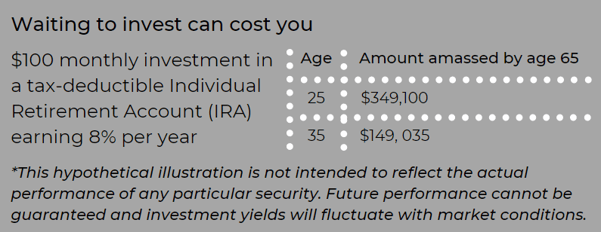

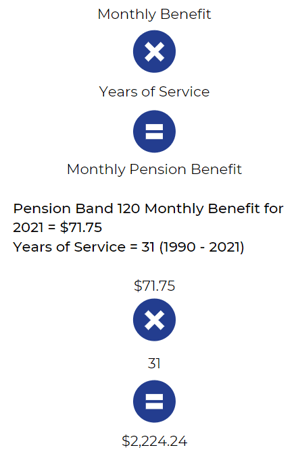

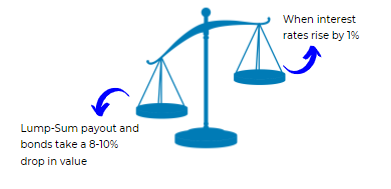



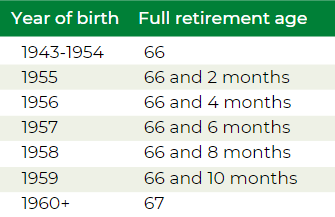

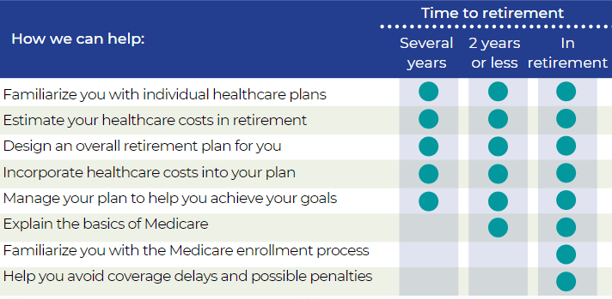







-2.png?width=300&height=200&name=office-builing-main-lobby%20(52)-2.png)









.webp?width=300&height=200&name=office-builing-main-lobby%20(27).webp)


-2.png)









.webp)